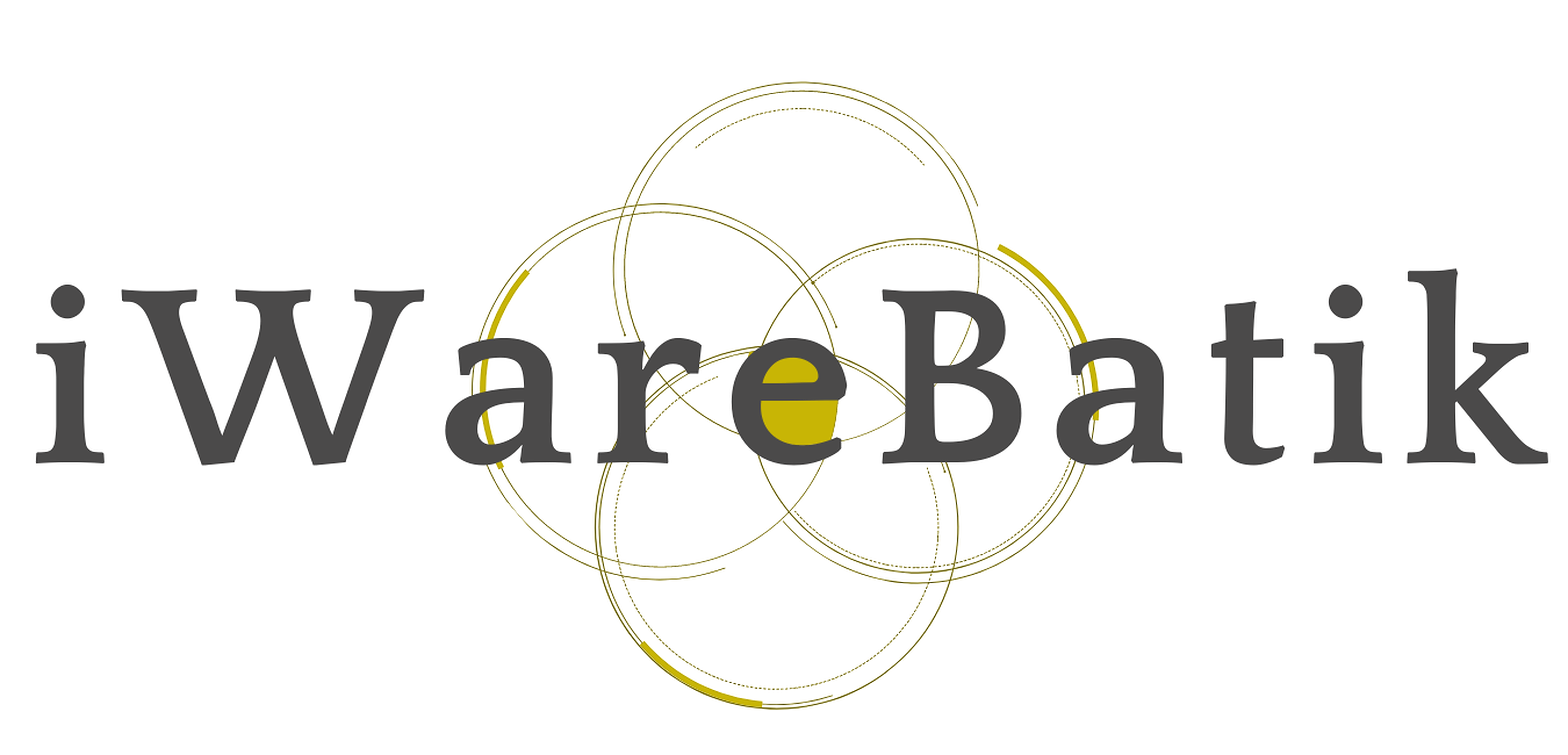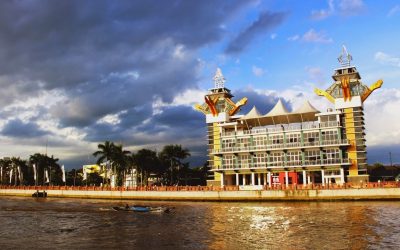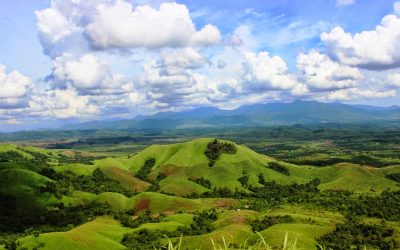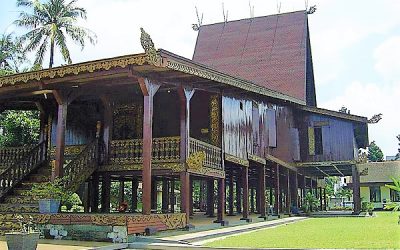Cultural Destination
Embrace the spirit of the place!
Lok Baintan Floating Market
South Kalimantan province – Indonesia
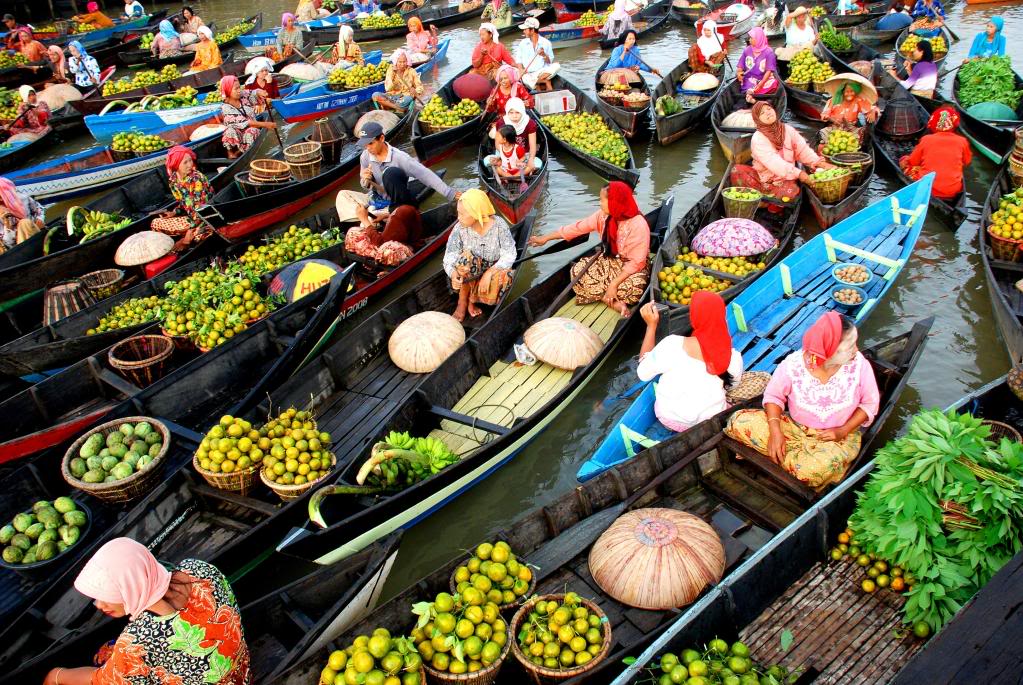
Lok Baintan Floating Market in Banjarmasin (photo: Indonesia-tourism)
Lok Baintan Floating Market
Take a dip in this floating market. No matter at what hour you want to enjoy this picturesque spot, it will always surprise you. As you can imagine, you can buy authentic local goods and even enjoy your meal of local dishes while navigating through the water. This is a unique experience you cannot miss.
Cultural Tourism Destination
Lok Baintan Floating Market
Tourist Attractions in South Kalimantan
Taman Siring Tower
Taman Siring Tower is the iconic landmark of Banjarmasin city that you can’t miss
Rimpi Hill in Pelaihari
If you want to see unique and different natural scenes, you can visit
Bubungan Tinggi Traditional House
The traditional house of Banjar Tribe in South Kalimantan is known for its steep
South Kalimantan
Batik Motifs
Gigi Haruan Lidi
The Gigi Haruan Lidi motif is taken from the name of the cork fish and is a symbol of
Tampuk Manggis Sasirangan
The motif illustrates the philosophy of the mangosteen fruit, which is
Discover
Indonesian
Batik
Motifs
Besurek Rafflesia
The term “Basurek” refers to a textile that contains letters or inscriptions
Pucuk Rebung Riau
Pucuk Rebung symbolizes heart determination in achieving goals, good luck, and
Sero Tangga
The Sero Tangga illustrates an endearing feeling and sacrifices of a person to fulfil
Daun Lada Hitam
The black pepper motif represents the main commodity of Bangka Belitung
Desa Na Tolu
The Desa Na Tolu characteristic pattern symbolizes the Batak philosophy of existence and
Durian Pecah
Broken Durian motifs depict the foundation of faith. The second half signifies the mastery of
Gonggong Beruntun
This motif illustrates that a person should maintain a positive attitude and
Parang Rusak
Another meaning behind this motif is an unconquerable spirit, symbolized by
Teguh Bersatu
This batik motif shows the strength of the people of Kupang. It also represents a sense of
Tengkawang Ampiek
With its many advantages, the Dayaks use this leaf in ritual ceremonies. This plant is a symbol of
Ikan tambal
The word “Ikan” refers to fish. The philosophical meaning of Ikan Tambal means is
Bekantan Pakis
This motif represents Pakis Haji (Polystichum setiferum), an endemic plant in
Sekar Jati
Sekar means flower and Jati refers to teak trees that symbolizes a strong mental character that
Leuit Sijimat
This motif reflects the daily activities of the Baduy tribe in Banten. The main ornaments of batik motif consist of:
Sandeq
Sandeq Boat is a symbol of the maritime importance of the West Sulawesi region. The greatness of
Kaganga Tanah Rejang
If Batik Besurek combines Arabic calligraphy motifs, then the Kaganga batik takes
Burung Bidadari
Bidadari birds are endemic birds in Halmahera. This motif represents an
Tabir Tanjung
Tanjung flower is a type of Cherry tree flower, which is commonly found in
Prada Papua
The word “Prada” in the Javanese-Indonesian dialect means a batik textile that
Honai
The Honai is inspired by the traditional house of the Papuan community living in
Keluak Daun Pakis
The word “Keluak” is a Minang language which means twisted or tangled. The Motif of
Gorga Simeol-Meol
The Gorga Simeol-meol is a pattern of plant tendrils. it is regarded as a symbol of longevity and
Kawung
The Kawung motif was created by Sultan Agung Hanyokrokusumo (1593 – 1645) as a symbolic gift for
Singayaksa
The Singayaksa motif comes from the name of a place where Sultan Hasanuddin used to
Tikar Natuna
The Tikar Natuna motif is adapted from the traditional making of pandanus mats in
Hiu Taliyasan
Indonesia is also home to the world’s largest fish, the whale shark (Rhincodon typus). Hiu Taliyasan refers to
Ake Patra
Ake is related to the divinity and the composition of the universe. It is a symbol of
Pati-Pati Pinehiku
It symbolizes the hierarchy in society and the social status of the Mekongga
Bale Lumbu
This motif signifies the welfare of the ancient Sasak society. Bale also symbolizes the
Sekomandi
Its philosophical meaning is the eternal union which refers to a saying “until death do us part”
Parang Seling
Parang Seling or “alternating daggers” is a royal batik motif. It is a feminine variant of
Gedhog Kembang Waluh
a combination of Javanese cultural motif of the Majapahit kingdom (XII-XIV century) with
Kuda Kupang
Horses symbolize wealth. It contains noble values of virtuous characters that bring
Insang Ikan
Insang refers to the gills of the fish. This is a typical pattern of Malay ethnic who inhabits
Tenun Bima
The motifs are adopted from Bima woven textile. This pattern has received a great
Wirasat
Wirasat or divine inspiration is a gift from God. This inspiration is symbolized by
Gonggong Siput
Gonggong (Strombus Turturella) is one type of sea snail found around
Karawo Pinang
Pinang refers to the Palm areca tree. This motif is considered as the original
Tangerang Herang
Tangerang Herang motif is a symbol of Tangerang city. The Tangerang Herang batik motif consists of
Daun Sirih
This motif illustrates betel leaves that are used by Lombok communities as traditional
Kain Cual
Cual textile tradition has existed since the 17th century. The word “Cual” refers to
Enggang Dayak
Local people beliefs that hornbills are an incarnation of the Commander of the Birds. It has supernatural
Pattimura
Pattimura is the name of an Indonesian hero who fought against colonialism in
Kaharingan
The Kaharingan or ‘tree of life’ based on the Dayak tribes’ belief system. This tree symbolizes
Daun Simpor
This motif is inspired by the Simpor plant (Dillenia Suffruticosa) which is a typical
Wakatobi
It symbolizes the coastal beauty of the Wakatobi island and the symbol of Patra symbolizes
Srimanganti
The name of the Srimanganti motif is derived from Palace’s hallway that connects to
Mahkota Siger
Siger is the crown of a noblewoman in ancient time. It is a symbol of femininity, strength, and
Raja Ampat
Raja Ampat motif represents the marine life at Raja Ampat archipelago in
Sido Mulyo
Sidomulyo is one of the classical motifs, which is specifically used for the bride’s costume in
Salakanagara
Salakanagara batik motif illustrates the first kingdom in the Betawi land
Tanah Liek
The word “Tanah Liek” refers to clay in Minang language. It is also known as
Merak Ngeram
The hatching peacock motif has a very deep meaning which refers to the sacrifice and
Tifa Totobuang
The batik motifs illustrate Maluku’s traditional music instrument called
La Galigo
La Galigo is a literary work of the Buginese Epic that has 300 thousand epic lines. It is considered even
Awan Berarak
Awan Berarak is a combination of Dayak motifs and Malay patterns. The word ‘Awan Berarak’ means the
Jumputan Bintang
The word Jumputan means the tie-dye technique, while the word “Bintang” refers to
Kasih Tak Sampai
‘Kasih Tak Sampai’ is an idiom in the Indonesian language which refers to
Manguni Minahasa
Manguni is identified as the symbol of the Minahasa people. Manguni is known as a
Buketan Bali
The Balinese bouquet (Buketan Bali) is a floral arrangement and the name is
Cengkeh
The clove flower motif is the main commodity of the Tolitoli Regency. This motif represents
Lontara
The Lontara script itself is a typical ancient script of Bugis and Makassar communities. History records that
Dayak Kamang
Kamang motif is generally found in the Dayak tribe shield because it is believed to
Besurek Rembulan
This batik illustrates praise for God who created the wonderful universe
Bultiya
The word ‘Bultiya’ is an acronym of the three major tribes in North Kalimantan, namely
Paqbarre Allo
The word “Barre” means round and “Allo” means the sunlight. This motif is interpreted as
Bomba Mawar
This motif means sacred love for family, kingdom, and God; It also illustrates
Ukir Sentani
The Ukir motif is a batik motif that is inspired by various traditional Sentani wood carvings
Gentala Arasy
Built as high as 80 meters, the tower also highlights the historical side of
Karawo Mahkuta
Mahkuta refers to Gorontalo’s traditional crown. It represents noble characters of
